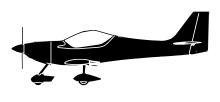
ASN Wikibase Occurrence # 201278
This information is added by users of ASN. Neither ASN nor the Flight Safety Foundation are responsible for the completeness or correctness of this information.
If you feel this information is incomplete or incorrect, you can submit corrected information.
| Date: | Tuesday 14 November 2017 |
| Time: | 06:30 LT |
| Type: |  B&F Technik FK14 Polaris |
| Owner/operator: | Private |
| Registration: | 57BMY |
| MSN: | |
| Fatalities: | Fatalities: 2 / Occupants: 2 |
| Aircraft damage: | Destroyed |
| Category: | Accident |
| Location: | Trou bleu d’Oundjo, Voh -
 New Caledonia New Caledonia
|
| Phase: | En route |
| Nature: | Private |
| Departure airport: | Koné airfield |
| Koné airfield | |
| Investigating agency: | BEA |
| Confidence Rating: |
The ultralight plane crashed into the sea. Both occupants, the pilot and a tourist, died in the crash.
BEA report (see below link for the complete report):
The pilot, accompanied by a passenger, takes off aboard 57BMY. He is followed by the company's chief pilot aboard an Alpha Trainer and a third pilot aboard a Syncro 912, both accompanied by a passenger. The three pilots meet at 6:18 am for a formation flight at about 1 ° 900 ft above the Foué Pass. Arrived around the tourist point of the Blue Hole of Oundjo, they separate vertically from 500 ft, the 57BMY being the lowest. Shortly before 6:30 am, at 1500 ft above Blue Hole, the 57BMY pilot told the pilots of the other aircraft that he was starting the "exercises".
After the completion of three maneuvers, he indicates at the frequency that he makes his last turn before taking the direction of the next tourist point. Shortly after, the pilot of 57BMY loses control of the ULM, which goes into a spin before crashing into the lagoon. In the context of tourist flights, maneuvers with the 57BMY were regularly performed by the company Hibiscus over points of interest. In society these maneuvers were described orally as lazy eight. However, the investigation established that they were similar to aerobatics with significant values and variations in roll, attitude and load factor.
Regular practice of such maneuvers outside the flight envelope of the aircraft by unmanned pilots exposed them and their passengers to the risk of loss of control. The company had set up a set of good practices through the documents regulating its activity, without the need for regulation. However, the acrobatic maneuvers regularly performed by the chief pilot and the pilot of the accident are not mentioned anywhere. The banalization in the execution of maneuvers has gradually reduced their level of awareness of the risks associated with such practices.
The active participation of the chief pilot in these maneuvers did not lead him to correct the excesses installed in the company. The investigation revealed that the pilot of the accident carried out a very large number of flights during days with extended hours and received only a very small number of days of rest. This intense piloting practice, which resulted in a significant level of fatigue for the pilot, has not been identified by the company's management or the pilot as being able to alter his piloting abilities. Hibiscus officials considered, like the pilot, that he was working as a provider for the company.
In this context, the pilot did not respect the minimum guarantees of the Labor Code of New Caledonia. However, the investigation showed that, given the relationship of subordination between the company and the pilot, the provisions of the Labor Code were applicable. Compliance with the minimum guarantees would have reduced the pilot's working time and could have reduced his level of fatigue.
It is in this context that the pilot lost control of the ULM during an acrobatic maneuver at an altitude of 1500 ft. Given the observed parameters, it is likely that the ULM unhooked asymmetrically during a steep uphill turn resulting in a significant increase in incidence and load factor.
This loss of control led the ULM to settle in a spin. In the absence of specific training, the pilot was not able to recognize the phenomenon of tendrils and to immediately apply the actions to get out of them.
Accident investigation:
 |
|
Sources:
https://www.bfmtv.com/international/deux-morts-dans-le-crash-d-un-ulm-en-nouvelle-caledonie-1302803.html
http://www.leparisien.fr/faits-divers/nouvelle-caledonie-deux-morts-dans-le-crash-d-un-ulm-14-11-2017-7391613.php
https://www.lnc.nc/breve/crash-d-ulm-trois-enqueteurs-du-bea-en-deplacement
BEA Aéro_________________________
https://www.bea.aero/uploads/tx_elydbrapports/BEA2017-0631.pdf
Images:

Media:
Un crash d’ULM fait deux morts au large de Voh https://t.co/Zwm3deByQV
— sebastien houziaux (@sebhouz) 15 novembre 2017
📄 Rapport d’enquête sur l’accident de l'#ULM #FK14 #Polaris identifié 57BMY survenu le 14/11/2017 à #Voh / Perte de contrôle en vol, collision avec la mer. https://t.co/4NL8WQEXbV pic.twitter.com/mRM4SVlhyE
— BEA | Bureau d'Enquêtes & d'Analyses ✈️ 🚁🛩 🇫🇷 (@BEA_Aero) July 29, 2019
Revision history:
| Date/time | Contributor | Updates |
|---|---|---|
| 14-Nov-2017 11:50 | gerard57 | Added |
| 15-Nov-2017 20:22 | Iceman 29 | Updated [Time, Aircraft type, Source, Embed code] |
| 20-Nov-2017 09:43 | Iceman 29 | Updated [Aircraft type, Location, Source, Embed code, Narrative] |
| 20-Nov-2017 09:44 | Iceman 29 | Updated [Narrative] |
| 29-Jul-2019 19:33 | Iceman 29 | Updated [Time, Registration, Location, Departure airport, Destination airport, Source, Embed code, Narrative, Photo] |
| 04-Aug-2019 17:52 | harro | Updated [Embed code, Accident report, ] |
Corrections or additions? ... Edit this accident description
The Aviation Safety Network is an exclusive service provided by:


 ©2024 Flight Safety Foundation
©2024 Flight Safety Foundation